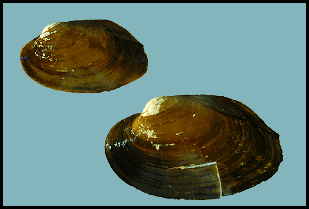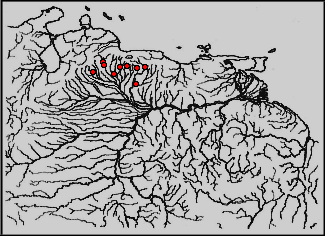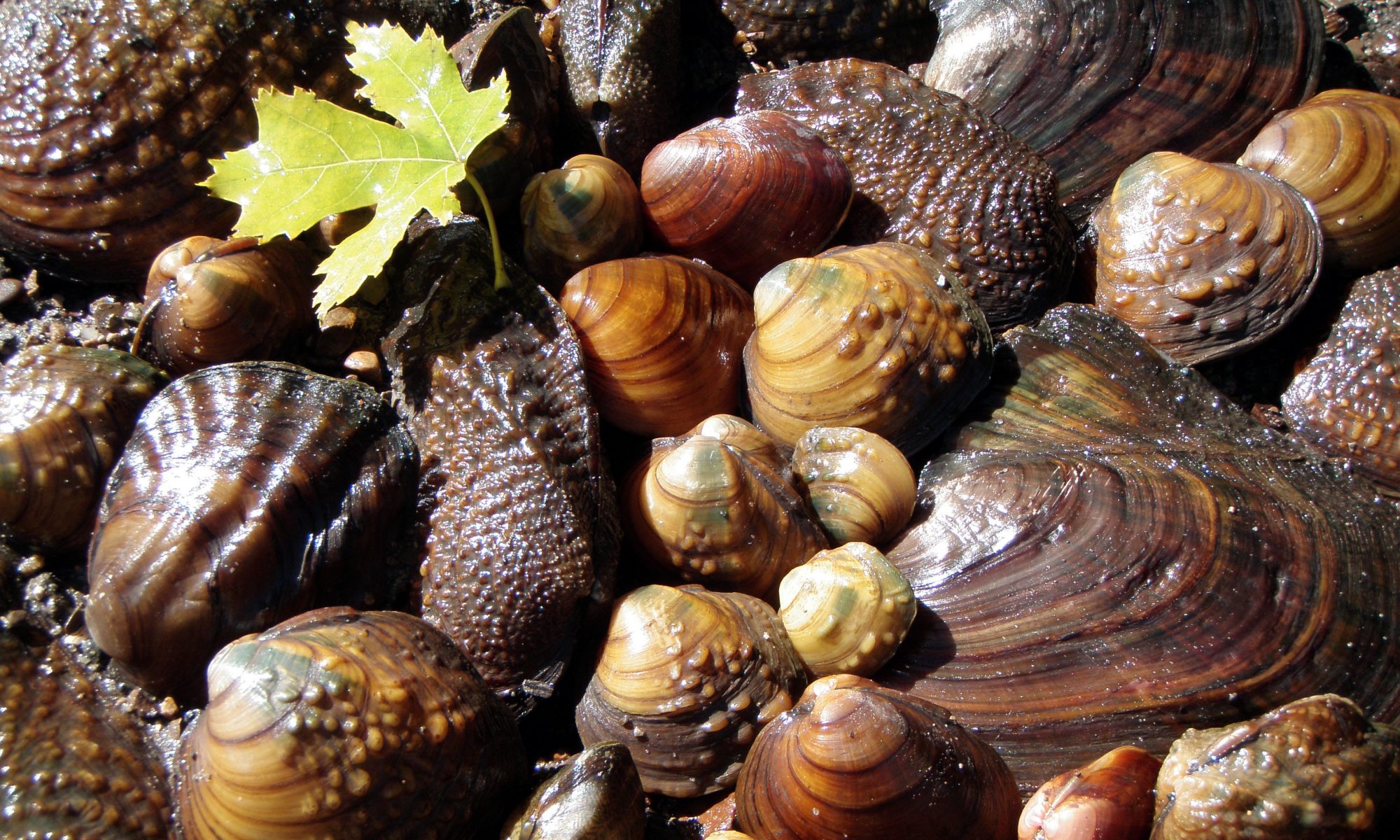(Dunker, 1858)


Original Description: Monocondylaea tamsiana Dunker, W. 1858. Einige neue species der Naiaden. Mal Blatt. 5:225-229.
Type Locality: Rio Chirgua, Porto Cabello, [Carabobo, Venezuela]. Collected by Dr. Tams.
Holotype: ???
Paratypes (?): ANSP 129960 (Swift Collection), Senck. Museum 3870.
Synonymy:
- Monocondylaea tamsiana Dunker, 1858
- Baker, 1930:65.
Monocondylaea tamsana Dunker, 1858
- Simpson, 1914:1392.
Tamsiella tamsiana (Dunker, 1858)
- Haas 1931:87; 1966:550.
Fossula venezuelensis Pilsbry & Olsson, 1944
- Pilsbry & Olsson, 1944:89, pl. 10, Type locality: Rio Guarico, at Barbacoas, Guarico, Venezuela, Holotype: ANSP 179759; Haas 1966:553.
Description: “Shell irregularly rhomboid, scarcely inflated; lower border of escutcheon distinct but posterior ridge hardly represented; side with very low indistinct, broad, radial swelling a little behind the middle. Outlines: anterior and narrowly rounded; posterior obliquely truncate, weakly emarginate just above posteroventral point of escutcheon; dorsal margin almost straight but oblique; ventral scarcely convex. Beaks (eroded): low near end of anterior third of shell. Exterior: epidermis quite thin, light yellowish green with somw indications of broad, darker rays; radial wrinkles mainly weak but accentuated unevenly at irregular intervals by epidermal threads which, with the similar growth threads, form a reticulate pattern; growth ridgelets stronger toward both ends. Interior: whitish to bluish, iridescent, with close and distinct, although shallow, radial striations; anterior adductor scar impressed; posterior much less so; prismatic zone quite broad and distinct, sinulus shallow. Hinge: quite weak; ligament medium in length. Right pseudocardinals: consisting of a short but low nodule, of triangular profile, just in front of umbonal apex, followed by a short, radial trough, and a lower posterior nodule. Left pseudocardinals: represented by a low thickening, which is triangular in profile, just behind the umbonal apex, with a shallow cavity before and another behind it; anterior nodule (the strongest in most species) scarcely represented. Laterals: not developed.
The sculpture of M. tamsiana is quite similar to that of M. franciscana (Moricand) as represented by Marshall (1925), although the reticulate threads appear to be stronger in the Venezuelan species. The general appearance of the exterior is quite similar to that of the typical group of the genus, even though the form is more elongate than usual. On the other hand, the hinge seems more like that of Fossula, with a distinct approach to the edentulous condition of Anodontites.” (Baker, 1930:65-66).
Description of Fossula venezuelensis: “The shell is oblong, the height 58 percent of the length, moderately inflated, of medium weight. It gapes slightly from the middle of the ventral margin to the anterior end, and somewhat lass along the posterior-dorsal slope. Beaks moderately prominent, at about the anterior fourth of the length. Dorsal and ventral margins but slightly curved, roughly parallel. Anterior end narrower, rounded. Posterior end oblique, having a projecting point at the end of a low, black ridge running from the beaks. Epidermis yellowish olive, much darker towards the ends. The interior is silvery and iridescent, with a rather wide dull prismatic border, widest (5.3 mm) near and at the posterior end. Cavity of the beaks deep. Anterior muscle impression distinct, the posterior ill defined.
In the right valve there is an erect, elongate anterior cardinal tooth. The pit below the beak is large, and there is no tooth posterior to it. The left valve has enerect, rather long irregular tooth below the beak. in place of lateral teeth there is a broad convex hinge plate, terminated by nearly black triangular sinulus.
Length 98 mm., height 57.5 mm., diameter 33 mm”. (Pilsbry and Olsson 1944:89).
Specimens Examined: INHS 14933 (26). Rio Guarico, Barbacoas, Aragua, Venezuela. 5 January 1994. K.S. Cummings, C.A. Mayer & G.B. Mottesi. INHS 14921 (8). Rio Camoruco, 3 km SE Libertad, Cojedes, Venezuela. 9 January 1993. K.S. Cummings & C.A. Mayer. INHS 14893 (43). Rio Camoruco, between Estero & Campo Alegre, about 10 km NW Libertad, Cojedes, Venezuela. 9 January 1993. K.S. Cummings & C.A. Mayer. INHS 11889 (7). Rio Tinaco, El Baul, Cojedes, Venezuela. 21 December 1990. L.M. Page, P.A. Ceas, M.E. Retzer & A. Barbarino. INHS 11891 (3). Rio Pao, W La Yeguera, Rt. 13 bridge, Cojedes, Venezuela. 22 December 1990. L.M. Page, P.A. Ceas, M.E. Retzer & A. Barbarino. INHS 15941 (3). Los Manires Creek, 17 km E Guanare on rd. to La Quebrada, Portuguesa, Venezuela. 11 June 1984. D.C. Taphorn, L. Nico & G. Feo.

